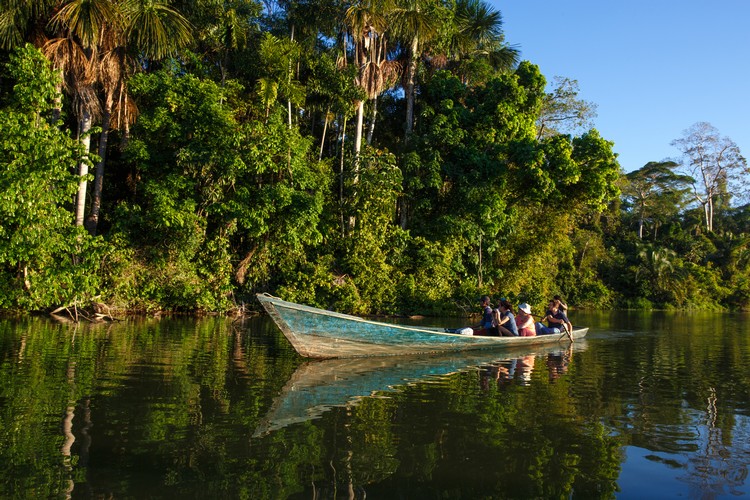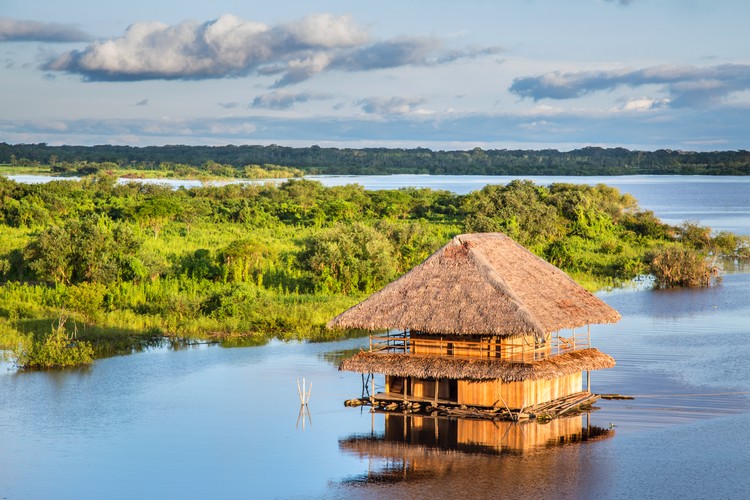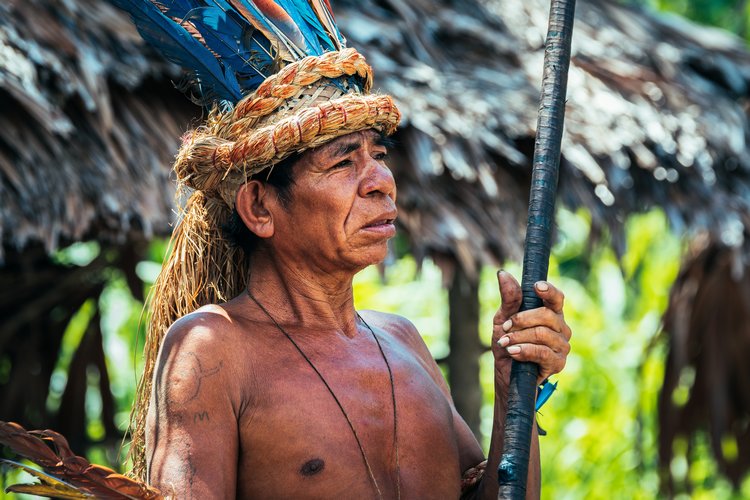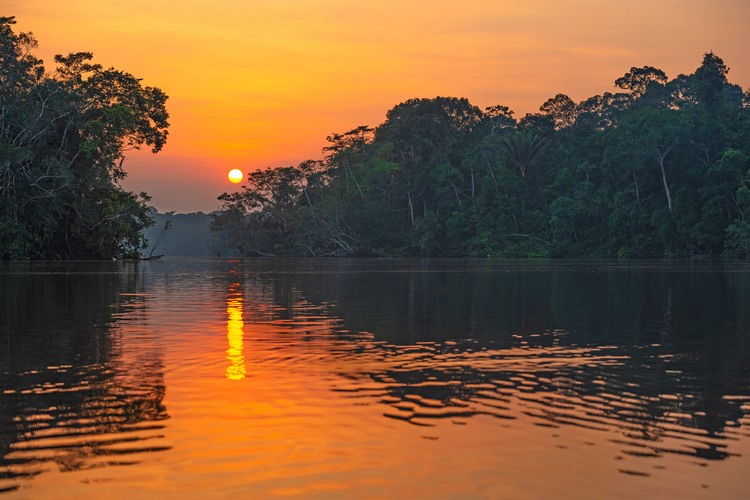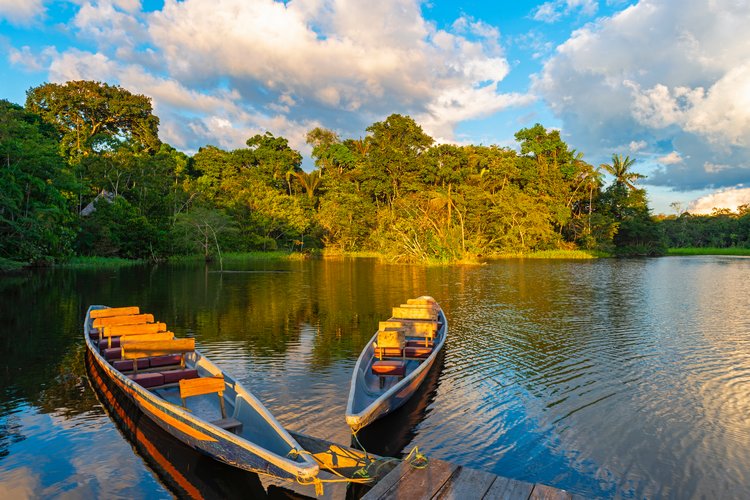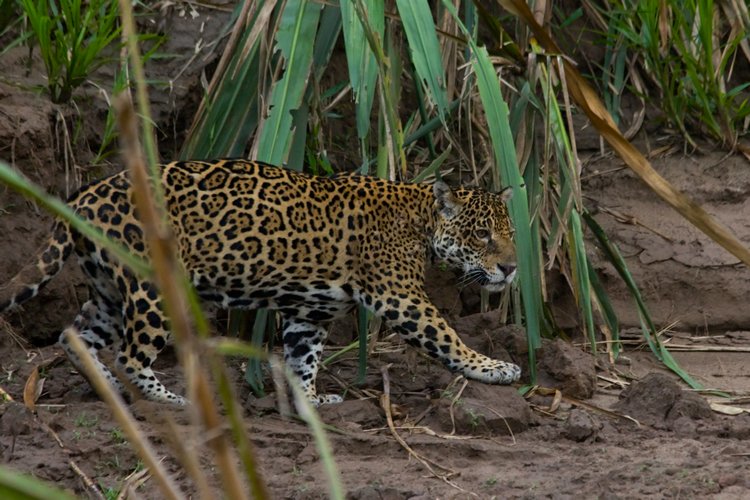Peru’s Amazon Rainforest offers one of the best sections of The Amazon to visit. With the second highest number of square Kilometres of rainforest after Brazil, the Peruvian Amazon boasts the most clay licks in South America, offering excellent opportunities to spot a huge variety of bird species. Along with Ecuador, Peru’s rainforest is located in western Amazonia, which offers the most wildlife, due to the nearby Andean Mountains. Bearing these things in mind, the Peruvian rainforest is an incredible place to visit. These forests are home to hundreds of Indigenous communities, who rely solely on this land to survive. The local benefits are obvious, but the Peruvian Amazon is also vital in the global fight against climate change as one of our planet’s most important carbon stores, giving us oxygen to breath. Enjoy spectacular scenery, relaxing cruises, adventure tours and diverse wildlife, so if nature is your thing, The Peruvian Amazon has to be on your bucket-list when planning a trip to Peru.
How to get There
There are two main entrance points for the Peruvian Amazon. These are Iquitos in the north of Peru, and Puerto Maldonado in the south. Iquitos is closest to the magnificent Amazon River, while Puerto Maldonado provides access to the incredible Tambopata National Reserve and Manu National Park.
– Puerto Maldonado
The southern Peruvian Amazon offers more clay licks than anywhere in South America. This is the rainforest accessed from Peru’s gateway town of Puerto Maldonado. From here, you can enjoy visiting the clay licks to see hundreds of brightly-coloured endemic birds. The parrots and macaws visit these areas to eat clay. This is thought to provide necessary salts and to help neutralize toxins found in the birds’ diet of unripe fruits and seeds. You can visit these clay licks from one of the many lodges in The Tambopata region, who offer guided tours to Tambopata’s clay licks. The two recommendations are the Tambopata Research Centre and Refugio Amazonas Lodge. In addition to the clay licks, found in The Peruvian Amazon, you can also find spectacular ox-bow lakes offering refuge to lake-living wildlife. Some of these are even home to the magnificent endangered giant river otter.
– Iquitos
In the north of Peru, you can find Iquitos, where you can enjoy impressive river cruises to enjoy the Amazon. There are also jungle lodges for guided expeditions of the Iquitos rainforest. If you’re interested in an Amazon River cruise on your trip to Peru, then Iquitos should be your choice as there are different luxury cruises that depart from the port city. As the largest destination in the Amazon, the city offers a unique look at “city life” within the midst of the rainforest. Wander through wild markets selling exotic fruits, deadly catches, and herbal drinks claimed to deliver all sorts of effects. Dine at innovative restaurants in old colonial buildings that sit on the water’s edge, where the man-made jungle meets the untameable natural one.
The Rainforest Alliance
The Rainforest Alliance has partnered with Peru’s farmers and Indigenous Forest communities, local governments, and smallholder farmer groups to address these challenges through a range of interconnected strategies. These include fostering solid connections with responsible buyers; providing technical training on how to increase crop harvests on existing farmland; building alliances with local governments; increasing access to financing and business training; and advancing methods to respond to climate change—which wreaks havoc on all kinds of crops, particularly coffee. In the San Martín region, in the Northern Amazon, The rainforest Alliance is working with eight Indigenous communities to bring their sustainable products to market. One of them, the community of Yurilamas, in the province of Lamas, sets aside 26,000 ha (64,200 acres) of its lands for conservation and uses another 7,000 hectares to cultivate cocoa, as well as beans, bananas, yucca, peanuts, and more. Community leader Eligio Cachique Amasifuen explains that with support from the Rainforest Alliance, his community is now working to sustainably harvest sangre de grado, the latex extracted from trees of the same name (sometimes called sangre de drago, or dragon’s blood) that is used in many medicines.
Climate Change and Conservation in The Peruvian Amazon
While the climate crisis poses challenges to farmers of all crops, unpredictable weather patterns, prolonged dry seasons, severe rains and flooding, which especially threatens coffee, Peru’s main export. The Rainforest Alliance works with farmers to cultivate other crops alongside coffee to hedge against both climate and market fluctuations. Many coffee farmers are switching to cocoa in lower elevations and taking their coffee crops to higher ground that is more hospitable for coffee plants. A new generation of growers, hyper-aware of the threats posed by our climate crisis, are taking the lead in transforming their communities. They are combining traditional ecological knowledge with climate-smart agriculture methods to cultivate a better future for themselves and their children. Rainforest Alliance trainings have also empowered these young people to understand, and connect with global markets so that their communities can move from subsistence farming to thriving rural economies, all while honouring the precious Amazon rainforest that has sustained this beautiful country for centuries. Directly contribute to responsible travel in Peru by traveling to the Amazon region!
Weather in The Peruvian Rainforest
From a climatic point of view, the Peruvian Rainforest has three well-defined regions: the jungle, the high forest, and low jungle. The jungle is characterized by a tropical climate with an average annual temperature between 72°F and 79°F (22°C and 26°C), which makes it the wettest region of Peru. The high forest has a tropical climate with an average temperature of 88°F (31°C) and few temperature variations throughout the year, making it the hottest. The low jungle has a warm and humid, with rainfall no more than 3.000 mm. This rainfall keeps the forest lush and green and there is plenty of shelter under the canopy, in fact it’s so thick that when it rains, it takes around ten minutes for the water to reach the ground. But as you’re probably an adventurer like us, you’ll have no problem pulling out your raincoat and enjoying yourself.
‘Rainy’ season runs from December until May, but despite being the wettest time of year, it is only 10% wetter than ‘not-as rainy’ season which covers the rest of the year. The temperature ranges from 25°c to 35°c throughout, so you’re going to feel the heat whenever you decide to visit. One thing to be aware of is high water and low water seasons. High water season coincides with rainy season (December – May) and the rivers sit around 7 meters higher than normal. This means that every river, creek and lake is navigable and boats can carry you significantly deeper into the jungle. Low water season (June – November) sees other benefits, during this time you can walk the trails that are flooded in rainy season, there are less mosquitoes and good fishing is guaranteed. Neither season is better for viewing wildlife, the opportunities are incredible year-round on your trip to Peru!
What Animals are likely to Encounter in The Peruvian Amazon?
– Monkeys
most common species of monkey in the Amazon are howler, spider, squirrel, capuchin, tamarin and marmoset. You’ll most likely notice the howler monkeys first, their calls can be heard up to three miles away.
– Capybara
You’ll find these cute creatures either in the water or chowing down on some plants. They’re the largest rodent in the world which, unfortunately for them, makes them the preferred prey of jaguar, anaconda, caiman and even eagles.
– Green Anaconda
Anacondas are the world’s heaviest snakes and amongst the longest. They’ll eat anything that they can overpower – but don’t worry, there is little evidence to suggest that they’re the ‘man-eaters’ we’ve been led to believe.
– Black Caiman
Caiman are the largest predator in the Amazon ecosystem, they grow to between 5 and 20 feet and can weight up to 1000 pounds. They’re reptiles and closely related to alligators and crocodiles.
– The Jaguar
It is estimated that only 6000 of these majestic animals are left in the Peruvian Amazon, their last stronghold. They’re the third largest cat in the world and they’re excellent at hunting, climbing and swimming so keep your eyes peeled, spotting one of these big cats would be one for the ages.
Wherever you decide to enter The Peruvian Amazon, on your holidays in Peru, you can be sure of the adventure of a lifetime with many of the available jungle experiences. Ask us here for more information on jungle adventures for your next Peru vacations.

